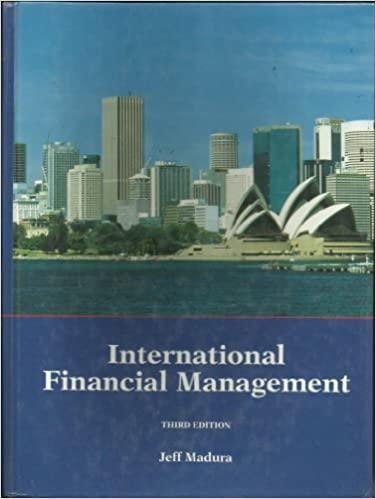Question
At t = 0, r0,1 = 2%, r0,3 = 3%, r0,11 = 11%. Your friend who is working at an invest- ment bank is trying
At t = 0, r0,1 = 2%, r0,3 = 3%, r0,11 = 11%. Your friend who is working at an invest- ment bank is trying to sell you a structured product. Your friend tells you that:
The economists at our bank believes that the yield curve is too steep based on the historical averages at this state of the business cycle and the expected monetary policy going forward. We have a new structured product that might interest you if you are looking to profit if the yield curve flattens next year. The way the product works is as the following: At t = 1, we will compare the slope of the 2-10 segment of the yield curve to the current 3-11 slope, which is r0,11 r0,3 = 8%. For every 1% of flattening, you will get $1M, but for every 1% of steepening, you will need to pay us $1M. For example, if at t = 1, r1,10 r1,2 = 6%, you will get $2M. If at t = 1, r1,10 r1,2 = 10%, you will need to pay us $2M.
You do agree that the yield curve will flatten next year. Further, assume you cant put on a flattening trade yourself. Nevertheless, you suspect that the contract is not fair. 1. Assume you agree to the terms of the structured product, how would the investment bank hedge their risk exposure? Specify the PV amount of 1-year, 3-year, and 11-year zero coupon bonds that the bank would need to long/short at t = 0. Note that the position in the 1-year bond is only required to make the overall hedge portfolio zero-cost. (Hint: first, find the ratio of the positions in the bonds at t = 1 such that the total position is not exposed to parallel shifts in the yield curve. Next, while ignoring $Carry, set P to $1M when there is a 1% flattening. At this point, you should be able to determine the values of the bond positions at t = 1. Now, go back one year and see what the PVs of the bond positions are at t = 0, based on the assumptions of Carry.)
2. Assume the investment bank hedges themselves as you described in part (1). What is their arbitrage profit on the structured product? (Ignore the fact that the hedge is not perfect due to the MD approach. You need to also consider the profit from the Carry trade.)
Step by Step Solution
There are 3 Steps involved in it
Step: 1

Get Instant Access to Expert-Tailored Solutions
See step-by-step solutions with expert insights and AI powered tools for academic success
Step: 2

Step: 3

Ace Your Homework with AI
Get the answers you need in no time with our AI-driven, step-by-step assistance
Get Started


